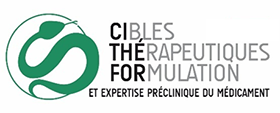L'article "Polymeric nanoparticles for increasing oral bioavailability of curcumin" vient de paraître dans le journal "Antioxidants", dans l'issue spéciale "Inspired by nature : Antioxidants and Nanotechnology".
Auteurs : Anita Umerska, Caroline Gaucher, Felipe Oyarzun-Ampuero, Isabelle Fries-Raeth, Florence Colin, Maria Gabriela Villamizar-Sarmiento, Philippe Maincent, Anne Sapin-Minet.
Référence de l'article : Antioxidants 2018, 7(4), 46; https://doi.org/10.3390/antiox7040046
Article accessible en cliquant ici.
Abstract :
Despite the promising biological and antioxidant properties of curcumin, its medical applications are limited due to poor solubility in water and low bioavailability. Polymeric nanoparticles (NPs) adapted to oral delivery may overcome these drawbacks. Properties such as particle size, zeta potential, morphology and encapsulation efficiency were assessed. Then, the possibility of storing these NPs in a solid-state form obtained by freeze-drying, in vitro curcumin dissolution and cytocompatibility towards intestinal cells were evaluated. Curcumin-loaded Eudragit® RLPO (ERL) NPs showed smaller particle diameters (245 ± 2 nm) and better redispersibility after freeze-drying than either poly(lactic-co-glycolic acid) (PLGA) or polycaprolactone (PCL) NPs. The former NPs showed lower curcumin encapsulation efficiency (62%) than either PLGA or PCL NPs (90% and 99%, respectively). Nevertheless, ERL NPs showed rapid curcumin release with 91 ± 5% released over 1 h. The three curcumin-loaded NPs proposed in this work were also compatible with intestinal cells. Overall, ERL NPs are the most promising vehicles for increasing the oral bioavailability of curcumin.

